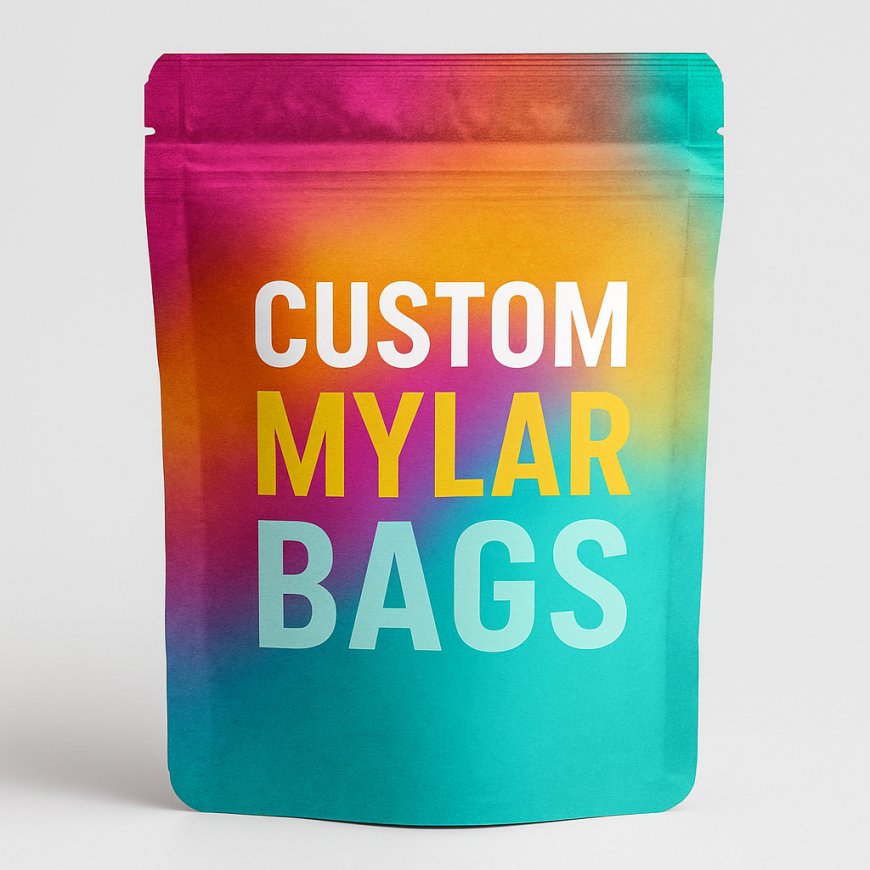The Environmental Impact of Custom Mylar Bags and How to Recycle Them
Learn about the environmental impact of custom-printed mylar packaging and how to recycle mylar bags. Discover sustainable alternatives and recycling tips for eco-conscious businesses and consumers.

As sustainability becomes an increasing priority for consumers and businesses alike, it's important to consider the environmental impact of packaging materials. Custom-printed mylar packaging is widely used for its durability and versatility, but it also raises concerns about waste and recyclability. In this article, we will explore the environmental impact of mylar bags and discuss how consumers and businesses can take steps to recycle them effectively.
Understanding the Environmental Impact of Mylar Bags
Mylar bags are made from a type of polyester film that is known for its excellent barrier properties, keeping contents safe from moisture, light, and air. While these features make custom-printed mylar packaging an attractive option for packaging, they also come with environmental concerns:
-
Non-Biodegradable Material
One of the biggest drawbacks of mylar bags is that they are not biodegradable. This means that once discarded, they can remain in the environment for hundreds of years. This persistence contributes to the growing issue of plastic waste in landfills and oceans. -
Challenges in Recycling
Unlike other plastics, mylar bags are not accepted in standard curbside recycling programs. The combination of plastic layers in mylar bags makes them difficult to process in conventional recycling facilities. As a result, many mylar bags end up in landfills, further exacerbating waste management problems. -
Energy-Intensive Production
The production of custom-printed mylar packaging can be energy-intensive. Mylar bags are typically made using petroleum-based materials, which contribute to the depletion of fossil fuels and the release of greenhouse gases. Additionally, the manufacturing process requires significant energy input, making the overall environmental footprint of these bags considerable.
How to Recycle Mylar Bags
Despite the challenges associated with recycling mylar bags, there are ways to minimize their environmental impact. Here are a few steps consumers and businesses can take to recycle these bags responsibly:
-
Check for Local Recycling Programs
Some specialized recycling facilities accept mylar bags for recycling. Contact local recycling centers or waste management services to inquire whether they accept mylar bags or if there are any nearby facilities that process these materials. -
Reuse Mylar Bags
One of the simplest ways to reduce waste is by reusing mylar bags. Their durable, water-resistant nature makes them ideal for storage, and many people use them to store items like food, documents, or electronics. Reusing these bags can help extend their life cycle and reduce the need for new packaging. -
Upcycle Mylar Bags
Upcycling involves repurposing used mylar bags into new products. Creative projects like turning them into wallets, bags, or other accessories can help prevent them from ending up in the trash. Some individuals and companies even incorporate mylar into artistic endeavors, providing a second life for the material. -
Use Sustainable Alternatives
For businesses looking to reduce their environmental footprint, consider using more sustainable alternatives to custom-printed mylar packaging. Materials such as biodegradable plastics, recycled paper, or compostable materials are becoming increasingly popular and can help brands maintain eco-friendly packaging practices without compromising on quality.
What Mylar Bag Manufacturers Are Doing to Improve Sustainability
In response to growing environmental concerns, mylar bag manufacturers are beginning to explore more sustainable options in their production processes. Here are some efforts being made to improve the environmental impact of mylar bags:
-
Recycled Materials
Some mylar bag manufacturers are now offering products made from recycled PET (polyethylene terephthalate) plastic. This helps reduce the amount of virgin plastic needed in production and encourages the use of materials that would otherwise end up in landfills. -
Eco-Friendly Printing
Eco-friendly ink options are becoming more popular among custom-printed mylar packaging manufacturers. These inks use fewer harmful chemicals and reduce the environmental impact of the printing process. -
Reducing Packaging Waste
Some manufacturers are also focusing on reducing packaging waste by offering mylar bags that are lighter and require less material to produce. This helps lower the overall carbon footprint of each bag produced.
Conclusion
While custom-printed mylar packaging offers numerous benefits in terms of durability and protection, its environmental impact cannot be overlooked. With careful recycling practices, reusing, and upcycling, we can help mitigate the negative effects of these bags. For businesses, exploring sustainable alternatives and working with mylar bag manufacturers who prioritize eco-friendly production can contribute to reducing the overall environmental footprint. By taking these steps, we can enjoy the benefits of high-quality packaging while being responsible stewards of the environment.









































